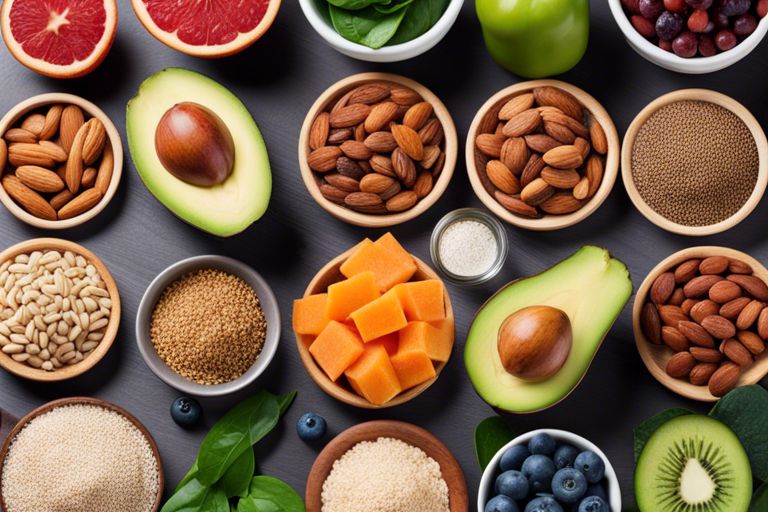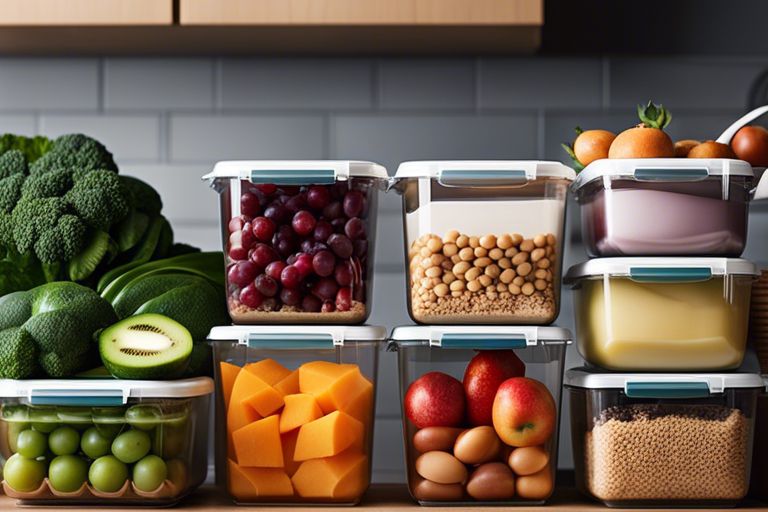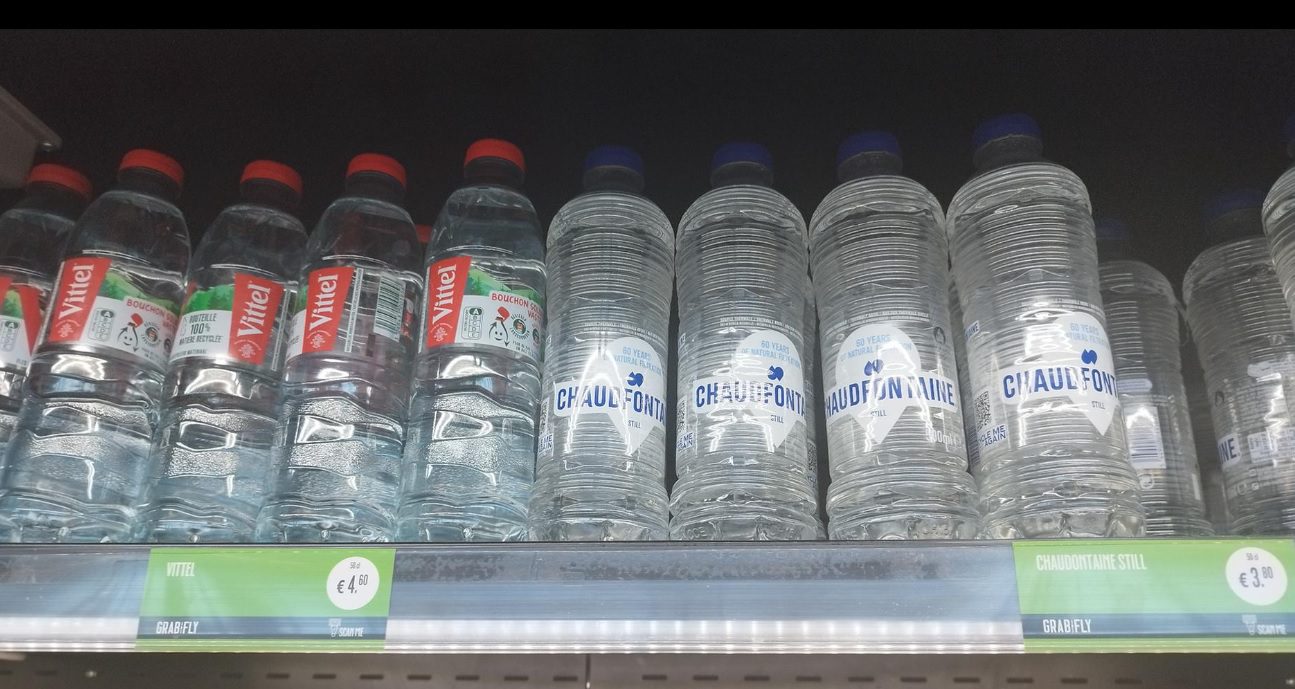Fitness enthusiasts, are you ready to take your workouts to the next level? Incorporating superfoods into your diet can make a significant difference in your fitness results. These superfoods are packed with vital nutrients and antioxidants that will enhance your performance and recovery. Let’s explore seven powerful superfoods that will fuel your body, accelerate your progress, and help you achieve your fitness goals faster than ever before. Keep in mind, what you eat plays a crucial role in your fitness journey, so why not give your body the best fuel possible?
1. Include superfoods like berries, spinach, and quinoa in diet.
2. Superfoods can improve energy levels during workouts.
3. Oats and sweet potatoes aid in muscle recovery and growth.
4. Avocado and chia seeds provide healthy fats for endurance.
5. Incorporate salmon and lean proteins for post-workout recovery.
6. Boost metabolism with superfoods like green tea and almonds.
Setting Your Fitness Goals
Your 5 Best Superfoods to Skyrocket Your Workout Results journey begins with setting clear fitness goals. Identifying what you aim to achieve will help you stay focused and motivated throughout your fitness journey. Whether you want to lose weight, build muscle, or improve endurance, having well-defined goals will guide your actions and keep you on track.
Identifying Your Objectives
On your fitness journey, it’s crucial to identify your objectives. Do you want to increase your strength, improve your cardiovascular health, or enhance your flexibility? Understanding what you want to accomplish will help you tailor your workout plan to meet your specific needs. Take the time to reflect on your fitness goals and be realistic about what you can achieve.
Creating a Realistic Workout Plan
Objectives like losing 20 pounds in a week or running a marathon without any prior training may not be realistic. It’s necessary to create a workout plan that aligns with your fitness goals and abilities. Start by setting achievable milestones and gradually increasing the intensity and duration of your workouts. Consulting with a fitness professional can also help you design a plan that is both challenging and sustainable in the long run.
The Power of Superfoods
What Makes a Food a Superfood?
For many people, the term “superfood” might sound like a marketing gimmick, but there is actually a scientific basis behind it. Superfoods are nutrient-rich foods that are particularly beneficial for your health and well-being. They are packed with vitamins, minerals, antioxidants, and other crucial nutrients that can help boost your immune system, improve digestion, and even aid in weight loss.
What sets superfoods apart from regular foods is their extraordinary nutritional value and health benefits. These powerhouse foods are known to provide a wide range of health advantages, often going above and beyond what is typically found in a standard diet.
How Superfoods Can Enhance Your Fitness Journey
Fitness is not just about working out; it’s also about fueling your body with the right nutrients to support your active lifestyle. Including superfoods in your diet can have a profound impact on your fitness journey. These nutrient-dense foods can help increase your energy levels, improve your endurance, and speed up recovery after exercise.
Superfoods can also help you achieve your fitness goals faster by optimizing your overall health. When your body is properly nourished with the right nutrients, you are more likely to perform better during workouts, build lean muscle mass, and recover quicker from intense training sessions.
Superfood #1: Leafy Greens
Despite being often overlooked, leafy greens are an crucial part of your diet when aiming to boost your fitness results. These nutrient-rich powerhouses may not be the most exciting food on your plate, but they play a crucial role in supporting your overall health and fitness goals.
The Nutritional Benefits of Leafy Greens
For a start, leafy greens are packed with crucial vitamins and minerals that are vital for your body’s optimal functioning. **Iron**, **calcium**, **potassium**, and **vitamins A, C, and K** are just a few of the many nutrients found in abundance in leafy greens. These micronutrients are crucial for energy production, muscle function, and overall well-being.
Incorporating Leafy Greens into Your Diet
Leafy greens are incredibly versatile and can be easily incorporated into your daily meals. **Spinach**, **kale**, **swiss chard**, and **arugula** are just a few examples of nutrient-dense leafy greens that you can enjoy in salads, smoothies, stir-fries, or as a side dish. Including a variety of leafy greens in your diet not only adds flavor and texture to your meals but also provides a wide range of health benefits.
Nutritional tip: To ensure you’re getting the most out of your leafy greens, try to **mix up your choices** regularly. Each type of leafy green offers a unique set of nutrients, so by varying your selection, you can ensure you’re getting a broad spectrum of vitamins and minerals into your diet.
Superfood #2: Berries
Your fitness journey can receive a delicious boost with the inclusion of berries in your diet. These small fruits are packed with necessary nutrients that can help enhance your overall well-being and fitness results. Whether you prefer strawberries, blueberries, raspberries, or blackberries, incorporating berries into your daily meals can provide a range of benefits.
The Antioxidant Properties of Berries
Properties in berries such as antioxidants play a crucial role in reducing inflammation and oxidative stress in your body. The colorful pigments in berries, such as anthocyanins, are powerful antioxidants that can help combat free radicals, supporting your immune system and promoting faster recovery post-workout. Including a variety of berries in your diet can help protect your cells and aid in muscle repair, necessary for maximizing your fitness gains.
Delicious Ways to Enjoy Berries
Superfood berries are not only nutritious but also versatile, making them easy to incorporate into your meals and snacks. You can add a handful of berries to your morning oatmeal or yogurt for a refreshing twist, blend them into smoothies for a quick and tasty pre-workout boost, or simply enjoy them on their own as a sweet and satisfying treat. Experiment with different combinations and recipes to find creative ways to include berries in your diet and keep your taste buds excited.
Superfood #3: Fatty Fish
The Omega-3 Richness of Fatty Fish
Unlike other protein sources, fatty fish such as salmon, mackerel, and sardines are packed with omega-3 fatty acids that are important for your overall health and well-being. These healthy fats can help reduce inflammation, improve heart health, and enhance cognitive function. Incorporating fatty fish into your diet can also aid in muscle recovery and contribute to better workout performance.
Preparing Fatty Fish for Optimal Nutrition
Optimal preparation of fatty fish is crucial to retain its nutritional benefits. To maximize the omega-3 content, opt for grilling or baking instead of frying. Season your fish with herbs and spices instead of heavy sauces to keep the dish healthy and flavorful. Including a variety of fatty fish in your diet can help you reap the maximum health benefits and support your fitness goals.
Fish is not only a delicious protein source but also a powerhouse of nutrients that can boost your fitness results. Its high protein content aids in muscle repair and growth, while the omega-3 fatty acids support heart health and overall well-being. By making fatty fish a regular part of your diet, you can supercharge your fitness journey and achieve your goals faster.
Superfood #4: Sweet Potatoes
Keep your fitness journey on track with the powerhouse superfood – sweet potatoes. Packed with vital nutrients, sweet potatoes are a fantastic addition to your diet to help you achieve your fitness goals.
The Complex Carbohydrates of Sweet Potatoes
An excellent source of complex carbohydrates, sweet potatoes provide sustained energy for your workouts and daily activities. Unlike simple carbohydrates that cause energy spikes and crashes, the complex carbohydrates in sweet potatoes are digested slowly, keeping you full and energized for longer periods.
Creative Recipes for Sweet Potatoes
To spice up your meals and add variety to your diet, try incorporating sweet potatoes into creative recipes. You can roast them with a mix of herbs and spices, mash them with a touch of cinnamon and maple syrup, or even spiralize them into noodles for a fun twist on traditional pasta dishes.
Amp up the nutritional value of your meals by experimenting with different ways to enjoy sweet potatoes. Whether you bake, steam, grill, or fry them, sweet potatoes are a versatile ingredient that can be easily integrated into your diet to support your fitness journey.
Superfood #5: Avocados
Once again, you are presented with a top-tier superfood to enhance your fitness journey – avocados. This versatile fruit is not only delicious but also packed with nutrients that can benefit your body in numerous ways.
The Healthy Fats of Avocados
With avocados, you get a potent dose of healthy fats that can support your fitness goals. These monounsaturated fats help in maintaining proper hormone function, aiding in muscle growth and repair. Additionally, they provide a sustainable source of energy for your workouts, keeping you fueled and focused.
Avocado-Based Snacks for Fitness
For a quick and nutritious snack that aligns with your fitness objectives, incorporating avocados can be an excellent choice. Whether you enjoy them sliced on whole-grain toast or mashed into guacamole with some veggies for dipping, avocados offer a satisfying and nutrient-dense option to keep you on track.
It’s important to choose whole-food options like avocado-based snacks to fuel your body effectively and avoid processed alternatives that may hinder your progress. By opting for avocado-based snacks, you are making a smart choice that supports both your fitness goals and overall well-being.
Superfood #6: Beans and Legumes
Despite their small size, beans and legumes pack a powerful punch when it comes to boosting your fitness results. These nutritious superfoods are loaded with necessary nutrients that can support your fitness goals and overall well-being.
The Protein Power of Beans and Legumes
Legumes, such as lentils, chickpeas, and black beans, are excellent sources of plant-based protein. Protein is necessary for muscle repair and growth, making it a crucial component of your fitness journey. By incorporating beans and legumes into your meals, you can ensure that you are getting an adequate amount of protein to support your active lifestyle.
Easy Meal Prep with Beans and Legumes
On top of their protein content, beans and legumes are also convenient for meal prep. You can easily cook a batch of beans and legumes ahead of time and incorporate them into a variety of dishes throughout the week. Whether you add them to salads, soups, or wraps, beans and legumes can help you save time in the kitchen while still nourishing your body with necessary nutrients.
Another benefit of including beans and legumes in your meal prep is their fiber content. Fiber is important for digestion and can help you feel full and satisfied after meals, preventing overeating and supporting your fitness goals. So go ahead and stock up on a variety of beans and legumes to supercharge your meals and enhance your fitness results.
Superfood #7: Nuts and Seeds
The Crunchy Benefits of Nuts and Seeds
For a powerful boost to your fitness journey, consider incorporating Best Foods for Fitness like nuts and seeds into your diet. These tiny powerhouses are packed with necessary nutrients that can help improve your overall health and fitness performance. Nuts and seeds are rich in protein, healthy fats, fiber, vitamins, and minerals, making them a perfect snack option to fuel your body and keep you energized throughout your workouts.
Adding Nuts and Seeds to Your Workout Snacks
Any fitness enthusiast knows the importance of post-workout snacks. By adding nuts and seeds to your snack repertoire, you can take your fitness results to the next level. It provides a convenient way to refuel your body after a strenuous workout, helping you recover faster and build muscle more effectively. Additionally, the protein and healthy fats in nuts and seeds can help keep you feeling full and satisfied, reducing the temptation to indulge in unhealthy post-workout treats.
Combining Superfoods for Maximum Results
Many fitness enthusiasts are aware of the benefits of incorporating superfoods into their diets. These nutrient-dense foods are packed with crucial vitamins, minerals, and antioxidants that can help improve your overall health and fitness. According to 7 Best Foods To Boost Your Workout Results, combining different superfoods can enhance their individual benefits and provide you with a well-rounded source of nutrition to support your fitness goals.
Creating a Balanced Diet with Superfoods
Superfoods like spinach, quinoa, blueberries, and chia seeds offer a range of health benefits, but when combined strategically, they can have a synergistic effect on your fitness results. Incorporating a variety of superfoods into your meals can help provide your body with a diverse array of nutrients, **boost** your **energy levels**, and **improve** your **endurance** during workouts. Aim to include a mix of vegetables, fruits, lean proteins, and healthy fats to create **balanced** meals that support your fitness journey.
Sample Meal Plans for Fitness Enthusiasts
Fitness is not just about working out; it’s also about fueling your body with the right foods to **maximize** your **performance**. To **optimize** your **results**, consider **preparing** meal plans that incorporate a combination of superfoods. For example, you could start your day with a nutrient-packed **smoothie** made with **kale**, **berries**, and **protein** powder, followed by a **quinoa** and **salmon** salad for lunch, and a **turmeric**-spiced **chicken** with **roasted vegetables** for dinner. **Planning** your meals ahead of time can **ensure** that you’re **getting** the **nutrients** you need to **support** your **fitness** goals.
Overcoming Common Obstacles
Not every journey towards fitness and health will be smooth sailing. You may encounter obstacles along the way that can challenge your commitment and determination. However, it’s vital to remember that overcoming these obstacles is a crucial part of your growth and progress. Here are some common obstacles you may face and how to tackle them:
Dealing with Food Cravings and Temptations
Obstacles are inevitable when it comes to sticking to a healthy diet. Food cravings and temptations can often derail your progress and lead you off course. When faced with cravings, try to incorporate healthier alternatives that satisfy your taste buds while keeping you on track with your fitness goals. Stock up on nutrient-dense superfoods like blueberries, kale, and quinoa to help curb cravings and stay on the right path.
Staying Motivated on Your Fitness Journey
Common obstacles that many individuals encounter on their fitness journey include lack of motivation and plateaus in progress. It’s vital to find your reason why and set realistic goals to keep you motivated. Surround yourself with positive influences such as workout buddies or a supportive community to help you stay on track and overcome any setbacks you may face.
It’s important to celebrate your successes no matter how small they may seem. Monitoring your progress and acknowledging your achievements can help boost your confidence and keep you moving forward towards your fitness aspirations.
Maximizing Your Workout Routine
All fitness enthusiasts know that achieving your desired results requires more than just eating the right foods. To truly maximize your workout routine, you need to be strategic and intentional about how you approach your fitness regimen. This means creating a workout schedule that is tailored to your goals and lifestyle, as well as incorporating tips for increasing intensity and endurance into your routine.
How to Create a Workout Schedule
An effective workout schedule is crucial for making progress and staying motivated. To create a workout schedule that works for you, consider factors such as your fitness goals, availability, and preferences. Whether you prefer early morning workouts or evening sessions, make sure to set aside dedicated time for exercise and stick to your plan consistently. Additionally, incorporating a mix of strength training, cardiovascular exercise, and flexibility training into your weekly routine can help you achieve a well-rounded fitness level.
Tips for Increasing Intensity and Endurance
Workout routines can sometimes become stagnant if you don’t challenge your body enough. An effective way to boost your fitness results is by increasing the intensity and endurance of your workouts. Incorporating interval training, progressive overload, and proper rest and recovery into your routine can help you push past plateaus and see improvements in your strength and endurance levels. Knowing when to push yourself and when to listen to your body is key to making progress in your fitness journey.
Monitoring Your Progress
After incorporating these 7 superfoods into your diet and ramping up your fitness routine, it’s crucial to monitor your progress to ensure you’re on the right track towards reaching your goals. Tracking your fitness goals and progress is necessary for staying motivated and making adjustments as needed.
Goals: Tracking Your Fitness Goals and Progress
By setting specific, measurable, achievable, relevant, and time-bound (SMART) goals, you can effectively track your progress. Keep a fitness journal or use a tracking app to note down your workouts, food intake, and how you’re feeling physically and mentally. This will help you identify patterns, celebrate your successes, and modify your plan if necessary to keep moving forward towards your ultimate fitness goals.
Celebrating Small Victories Along the Way
Celebrating small victories along your fitness journey is key to staying motivated and committed to your goals. These victories may include hitting a new personal best in your workout, resisting temptation to indulge in unhealthy foods, or simply feeling more energized and confident in your body. Note, progress is progress, no matter how small it may seem!
The sense of achievement you get from acknowledging and celebrating these small wins will boost your confidence and keep you focused on making healthier choices every day. Embrace the journey and celebrate each step you take towards a fitter, stronger, and healthier version of yourself.
Conclusion
With this in mind, incorporating superfoods into your diet can have a significant impact on your fitness results. From helping to build muscle to aiding in recovery, these nutrient-packed foods can give you the edge you need to achieve your fitness goals. Be mindful of, consistency is key when it comes to seeing results, so make sure to include these superfoods in your meals regularly.
By fueling your body with the right nutrients, you can optimize your workouts and recover faster, leading to better overall performance. So next time you’re planning your meals, consider adding some of these superfoods to your plate and watch as your fitness results soar to new heights!














